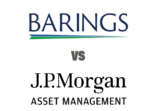The US and China provide some benefit to Korean corporates, Hyung Jin Lee, head of Asian equities, wrote in a recent research note. As the US economy expands, Korean exports should pick up. Another tailwind is the increasing number of Chinese tourists visiting the country.
“In 2014, Chinese residents visited Korea more than any other foreign country, bringing billions of dollars in spending power and profit growth for Korean companies.”
“We see potential for upward earnings per share revisions in the short-term, while any further monetary easing should result in a stronger tailwind for corporate earnings and potential for steady gains from competitively positioned companies.”
However, Aidan Yao, senior emerging market economist at Axa Investment Managers, pointed out that Korea’s economy faces significant headwinds.
Exports make up more than 50% of the country’s GDP and they have been in decline this year. The strengthening of the Korean won makes exporters less competitive and headline inflation is “dangerously close to zero”, Yao said.
He believes the central bank is facing increasing pressure to cut interest rates, but it will sit and monitor the market for the time being.
Small ideas
Korea is known for its chaebols, or family-owned conglomerates, such as Samsung, Hyundai and Lotte Group, which dominate the economy and have political connections.
Lee, however, is looking for opportunity in the small and mid-cap segment. About 46% of the market capitalisation of the Korea Composite Stock Price Index constitute companies with capitalisation at or below KRW5trn ($4.5bn), Lee said.
“Since these companies are less well covered by investment analysts, we see real value as an active manager in researching these companies in search of the giants of tomorrow.”
When assessing investments, he looks at the quality of management and franchise as well as the potential for long-term growth.
“There still needs to be upside in the share price once we have done our valuation work. We want companies with the potential to deliver better profits than expected, and a share price which will move higher on as this happens.”
Nikko Asset Management is also looking for selective opporutnities and that means going beyond exporters, said Peter Sartori, head of Asian equity.
“Korean exporters remain at the mercy of a stronger Korean won, but other segments of the market have become excessively cheap. With [GDP] growth expected to remain above 3% this year, we are starting to find more appealing bottom-up ideas across the investible universe,” Sartori said.
The Bank of Korea has put the GDP growth rate at 3.1% for 2015 and 3.4% for 2016. The economy expanded 3.3% on-year in 2014.
A look at the year-to-date performance of the Korean market relative to other Asian markets:

















